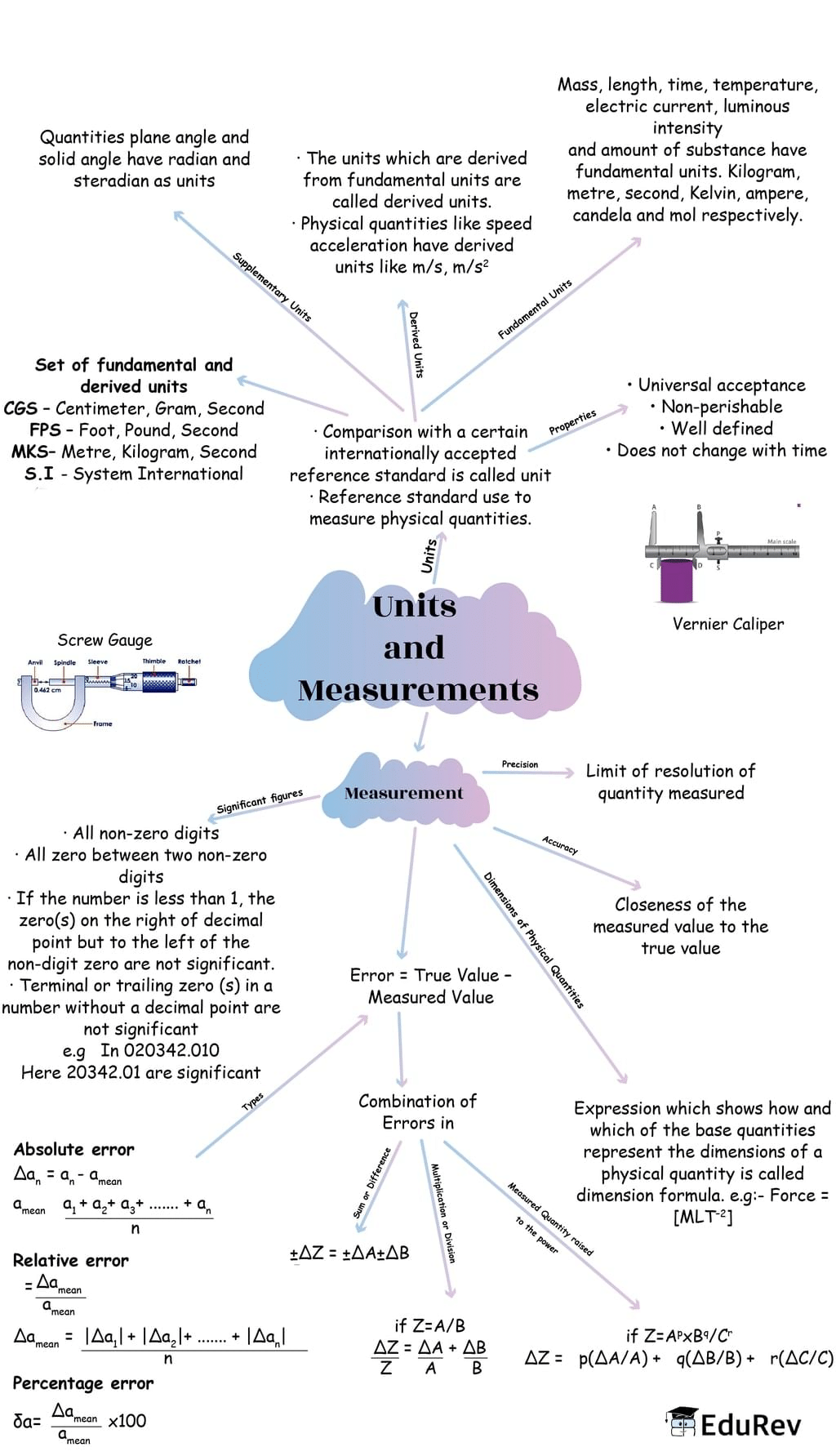NEET Exam > NEET Notes > Physics Class 11 > Mind Map: Units and Measurements
Mind Map: Units and Measurements | Physics Class 11 - NEET PDF Download

The document Mind Map: Units and Measurements | Physics Class 11 - NEET is a part of the NEET Course Physics Class 11.
All you need of NEET at this link: NEET
|
96 videos|367 docs|98 tests
|
FAQs on Mind Map: Units and Measurements - Physics Class 11 - NEET
| 1. What are the fundamental units of measurement in the International System of Units (SI)? |  |
Ans. The fundamental units of measurement in the International System of Units (SI) include the meter (m) for length, the kilogram (kg) for mass, the second (s) for time, the ampere (A) for electric current, the kelvin (K) for temperature, the mole (mol) for the amount of substance, and the candela (cd) for luminous intensity.
| 2. How do you convert between different units of measurement? |  |
Ans. To convert between different units of measurement, you can use conversion factors, which are ratios that express how many of one unit are equal to another unit. For example, to convert inches to centimeters, you multiply by the conversion factor (2.54 cm/inch), and to convert from kilograms to grams, you multiply by 1000 g/kg.
| 3. Why is it important to use standard units of measurement? |  |
Ans. Using standard units of measurement is important because it ensures consistency and clarity in communication, facilitates comparison of measurements across different contexts, and helps avoid confusion or errors that can arise from using non-standard or varying units.
| 4. What is the difference between accuracy and precision in measurements? |  |
Ans. Accuracy refers to how close a measured value is to the true or accepted value, while precision indicates the consistency or reproducibility of measurements. A measurement can be precise but not accurate if it consistently yields the same result that is far from the true value.
| 5. How do you determine the appropriate level of significant figures in a measurement? |  |
Ans. The appropriate level of significant figures in a measurement is determined by the precision of the measuring instrument used and the context of the measurement. Generally, all non-zero digits are significant, any zeros between non-zero digits are significant, and leading zeros are not significant. The final result should reflect the least number of significant figures from the measurements involved in calculations.
Related Searches

















